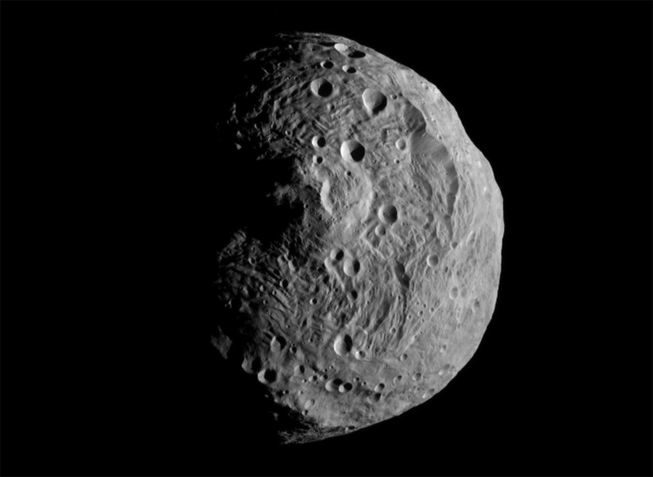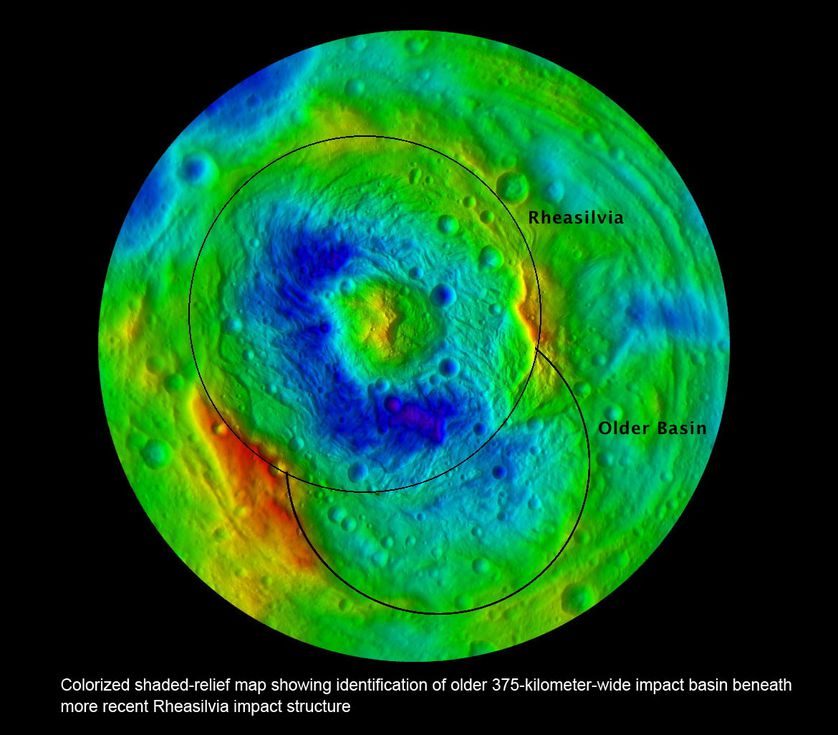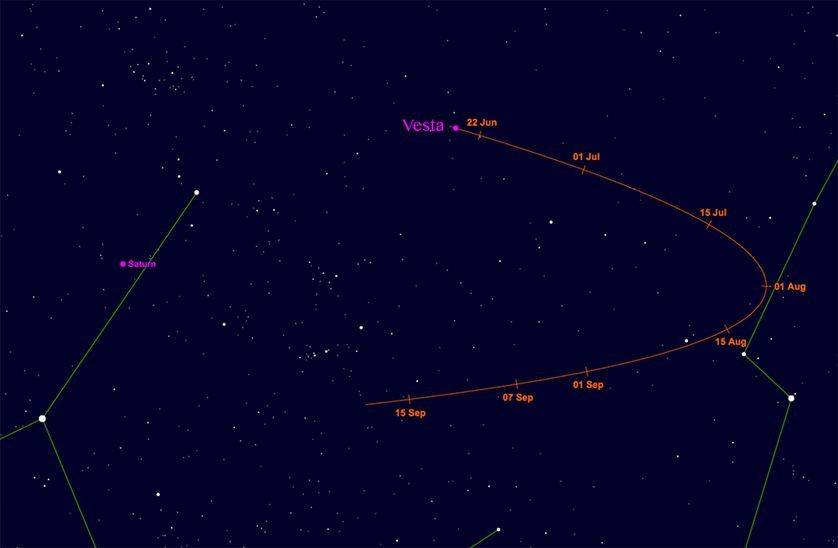
Vesta, a 326-mile-wide object residing in the asteroid belt between Jupiter and Mars, is about to make its closest approach to Earth in nearly two decades. But don't worry, unlike other close calls with asteroids in recent history, Vesta is in a stable orbit around the sun that will only bring it within 106 million miles of Earth. Nonetheless, this convergence will make it visible to the naked eye, with a magnitude brightness approaching a maximum of 5.3 this week.
Unlike other asteroids, Vesta's internal geology mimics those of terrestrial planets, with a metallic iron-nickel core covered by a surface crust of basaltic rock. In fact, it's this "frozen lava" that gives Vesta its beautiful reflectivity, casting back 43 percent of all light that hits it. (For comparison, our moon only reflects about 12 percent of all light.)
A 2011 visit by the NASA space probe Dawn confirmed Vesta as our solar system's lone remaining protoplanet, an embryonic remnant of the material that created future worlds like Earth.
"We now know that Vesta is the only intact, layered planetary building block surviving from the very earliest days of the solar system," Carol Raymond, deputy principal investigator for the Dawn spacecraft, said during a 2012 press conference.
An imposing mountain borne from a violent past

"The south polar mountain is larger than the big island of Hawaii, the largest mountain on Earth, as measured from the ocean floor," Dawn mission investigator Chris Russell told reporters. "It is almost as high as the highest mountain in the solar system, the shield volcano Olympus Mons on Mars."
Whereas Olympus Mons rises nearly 14 miles (72,000 feet) above the surface of Mars, the unnamed peak on Vesta is just under 13 miles (65,000 feet) tall. It's located in a 314-mile-wide crater, also one of the largest in the solar system, named Rheasilvia, after the mythological vestal virgins of Rome. It's theorized that Rheasilvia and its central peak were formed roughly 1 billion years ago from a massive planetary scale impact that delivered a glancing blow at an estimated 11,000 miles per hour.
"Vesta was lucky," Peter Schultz, professor of earth, environmental, and planetary sciences at Brown University, said in a statement. "If this collision had been straight on, there would have been one less large asteroid and only a family of fragments left behind." Schultz published a study on the asteroid's violent past in 2014.
Vesta's scrape with disaster would turn into a rare opportunity for scientists on Earth an eon later. The collision that rocked its south pole is estimated to have ejected at least 1 percent of the asteroid's mass into space, scattering a vast swath of debris throughout the solar system. Some of those rocks later made their way to Earth. In fact, it's estimated that some 5 percent of all space rocks found on Earth originated from Vesta, making it only a handful of solar system objects beyond Earth (including Mars and the moon) where scientists have a laboratory sample.
Look for Saturn to point the way

"To find it, begin at Saturn then star-hop with the naked eye or binoculars to 3.8-magnitude Mu (μ) Sagittarii. The asteroid is located 2.5°-4° northwest of that star through mid-June. Despite its location in star-rich Sagittarius, Vesta has little competition from similarly bright stars, making it easy to spot."According to those who have previously spotted Vesta, the asteroid exhibits a yellowish hue and looks very much like a star. Grab a lawn chair, ditch the light pollution and look up! Vesta won't be this close to Earth again until 2040.



Reader Comments